It’s time to stock up on pudding and hide the eggplants as Neptune and her friends are back for a new adventure
Type: Single-player
Genre: RPG
Developer: IDEA FACTORY,
COMPILE HEART,
TAMSOFT
Publisher: Idea Factory
Release Date: 27 Feb, 2018


Background
For those of you that are still unfamiliar with the Neptuniaverse, it’s kind of a what-if scenario. What if the major consoles of today were actually nations of their own, each console run by an authority feature. The four nations all compete for shares that empower their Goddesses by releasing the latest and greatest video games and video game consoles. Each one of those nations and Goddesses has been fashioned around their real-life counterparts. Seeing as though these nations are all founded on the principle of gaming, it seems fitting that the Goddesses ruling over the nations also enjoy gaming themselves. Vert aka Goddess Green Heart the CPU of Leanbox, is particularly fond of a Massive Multiplayer Online (MMO) game called ‘4 Goddesses’ Online and has referred to it many times over the course of the series. When I saw what felt like ages ago that the next game in the Neptunia series was going to be set in the ‘4 Goddesses Online’ setting I began to really look forward to finally seeing the fabled game myself. Surprisingly for me, that wasn’t the case. Instead of visiting the well-established MMO of legend, it’s actually set in the early beta for the sequel which simply shares the same name. In retrospect that makes sense. If the latest game in the Neptunia franchise was truly set in the MMO setting it would have been a massive undertaking. It would have changed the genre from Visual Novels mixed with Japanese Role-Playing style games to something that would be more akin to World of Warcraft level of complexity and gameplay.
Gameplay Video
About the game
Let’s dig a little deeper into the game’s concept before getting into the fine details. Each of the CPUs (Leaders of the nations) and their CPU Candidates (second in command) were invited to play in the closed beta for the next ‘4 Goddesses Online’ title. The Goddesses of the game are based on the HDD versions of the CPUs. To help you grasp what HDD versions means, it would help if you had played previous games in the series, but due to the writing of Cyberdimension Neptunia: 4 Goddesses Online it explains to you enough of the back story to grasp the concept while playing. However, since you are reading this and not actually playing the game I will explain it as well. The leader of the country, let’s take the series protagonist Neptune as an example, has her day to day identity as a lazy pudding loving person who hates eggplants. She is barely fit to run a country and is often found shirking her duties and leaving it to her CPU Candidate younger sister Nepgear to pick up her slack. Neptune is fun loving and seeks entertainment and friendship. She has the ability to transform into the Goddess Purple Heart which switches her personality from idleness to heroism and determination. When transformed her outward appearance changes from someone who looks like a young school girl to that of an adult woman and her voice changes to match her more commanding persona. The creators of ‘4 Goddesses Online’ (4GO) used the “real life” Goddesses of Gameindustri as the model for the Goddesses in the game. Not sure if they paid royalties for that, or if the Goddesses are just enjoying the game too much to realize that their likenesses are being ripped off. Mind you that often happens to public figures so that likely just comes as part of the job.
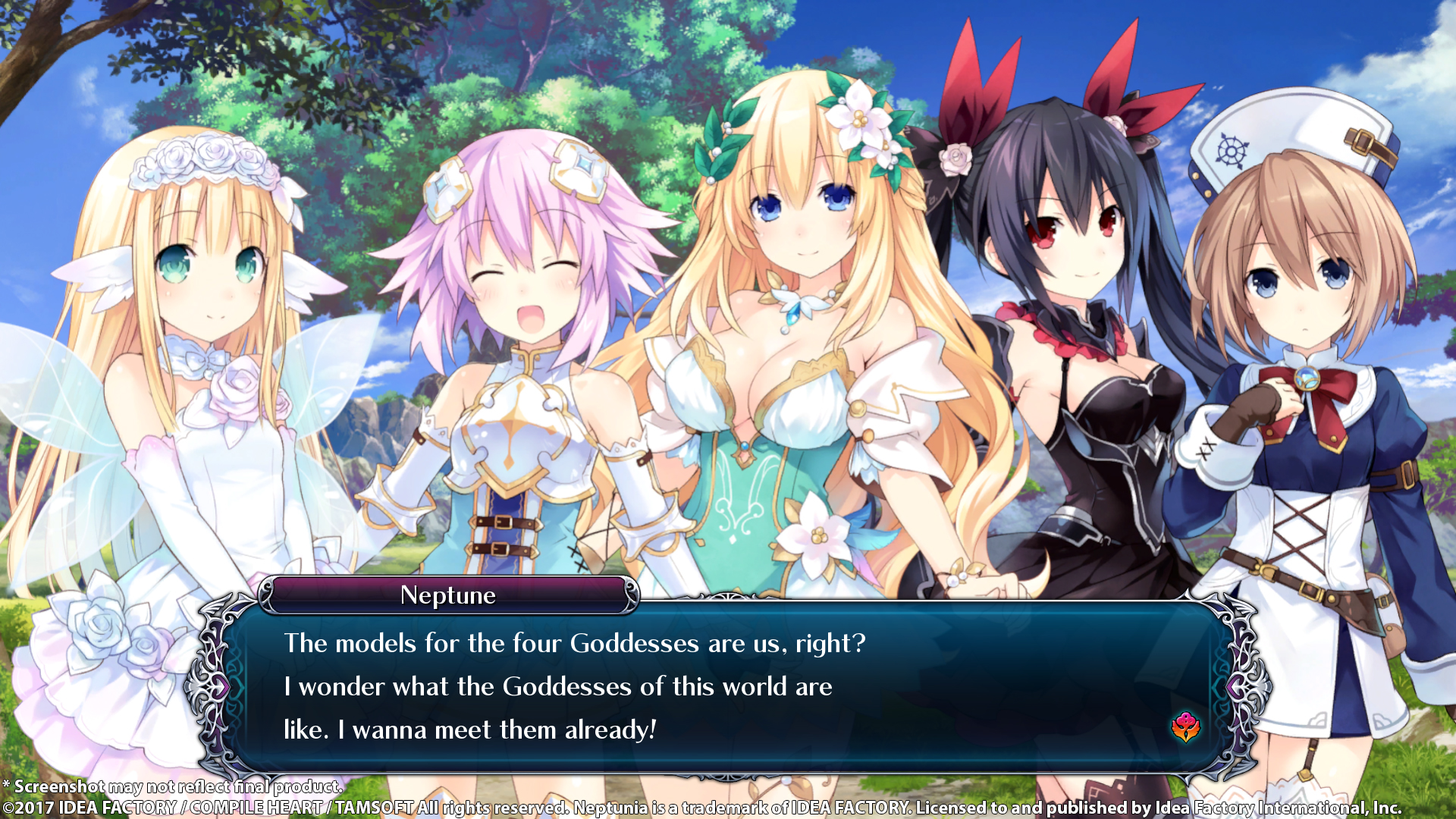
Okay with all that background information out of the way, it’s time to talk about the gameplay. Since it isn’t a true to form MMO, but a simulation of one, you don’t actually get to choose the classes of your characters or spend their experience points on skill tree upgrades. The players in the game do that for you. As mentioned previously you are playing a game about people playing a game. You can have four characters on the battlefield at any given time and have the ability to swap out for one of your reserve characters anytime you want. Each one is a unique class. Depending on which one of the characters you are controlling, the AI handles the other three characters. To help ensure the AI tries to do what you want, you are able to issue directions for the AI to follow and you can change these directions whenever you see fit. For the most part, the game plays like any other main series Neptunia game. You enter a dungeon, collect treasures and fight monsters until you reach the end. Each level ends with a boss fight, but you are able to warp out any time you see fit via one of the return to town orbs. Early in the game, these small monsters can prove a bit of a challenge but with the natural progression of the game they are usually not too challenging if you keep using the same four characters the entire time you play. I don’t really recommend you doing that because playing all the different characters available makes the game more enjoyable, and should you lose one of your characters in a boss fight, having a comparably leveled substitute in the wings can really help keep the tide of battle from turning against you. The bosses at the end of each level can be quite challenging both in the fact they have some really powerful moves available to them and the fact they have a ton of hit points.
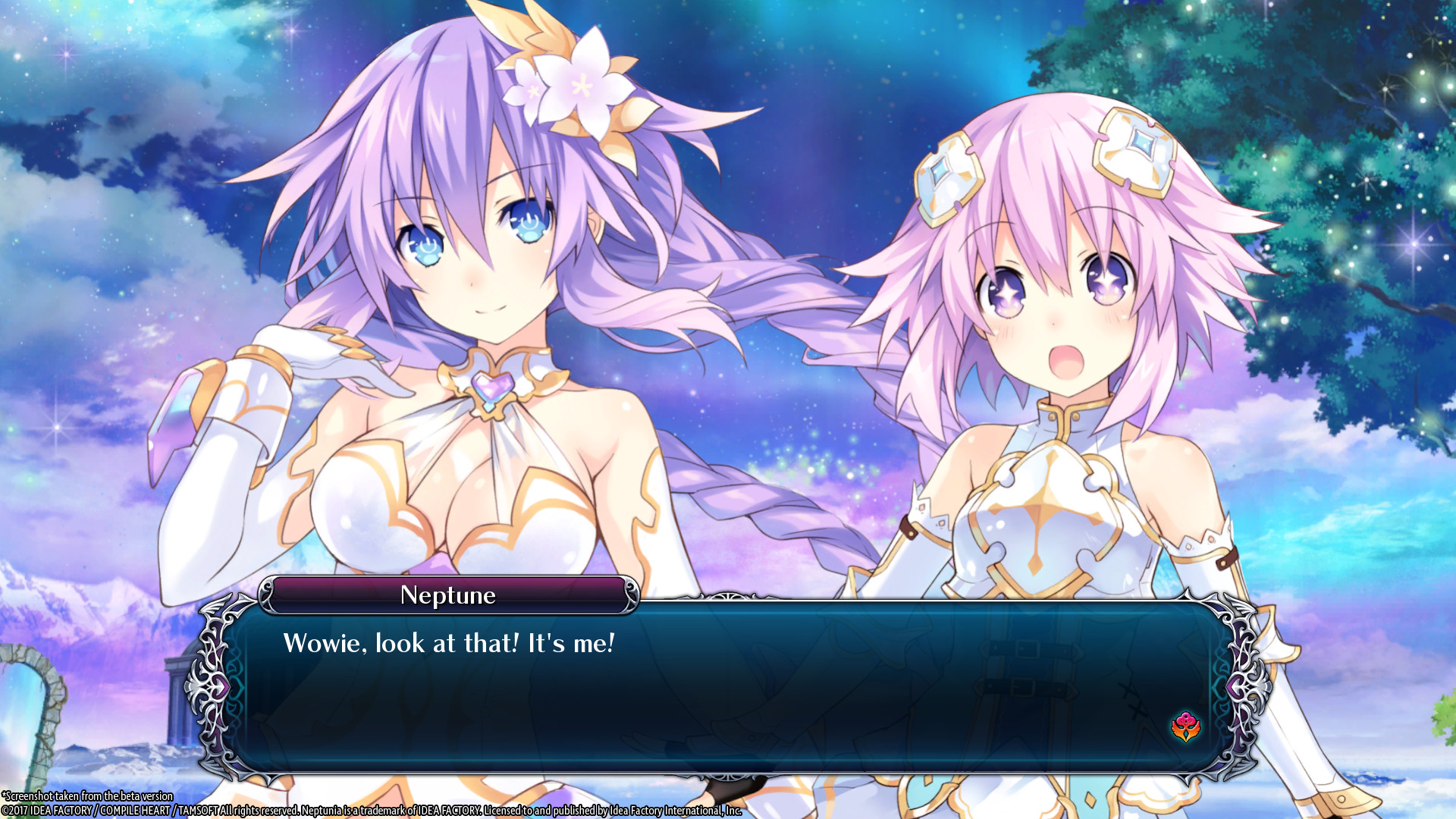
To help push the story forward and to pad out the gameplay, there is a Guild in town that will give you quests to complete. These quests typically involve either killing a certain number of things or turning in a certain amount of an item you found while out in the field. These Guild quests often will send you back to places you have already been, which is a good chance to level up your reserves rather than pushing through with your main team. You can only visit one dungeon per exit from town as leaving a dungeon will automatically teleport you back to the main city. Besides being the location of the Guild, while visiting the main city you will find shops mostly run familiar series favourites such as IF aka Iffy (the Idea Factory personification) and Compa (The Compile Hearts personification) and Plutia and Peashy who were Goddesses in another dimension. The shops are your primary source for items and weapons/ armour. You can also re-forge your weapons and armour to enhance them which often has the bonus of making them better than the first level of the next tier of gear. While you are at it, you can also customize your appearance with clothing and accessories. Additionally, while in town there will be dialogues you can take part in with various characters. These don’t always add a lot to the main story but they do serve as a nice distraction. In some cases, they are actually educational since there is an on-going segment about the finer points of tea classifications.
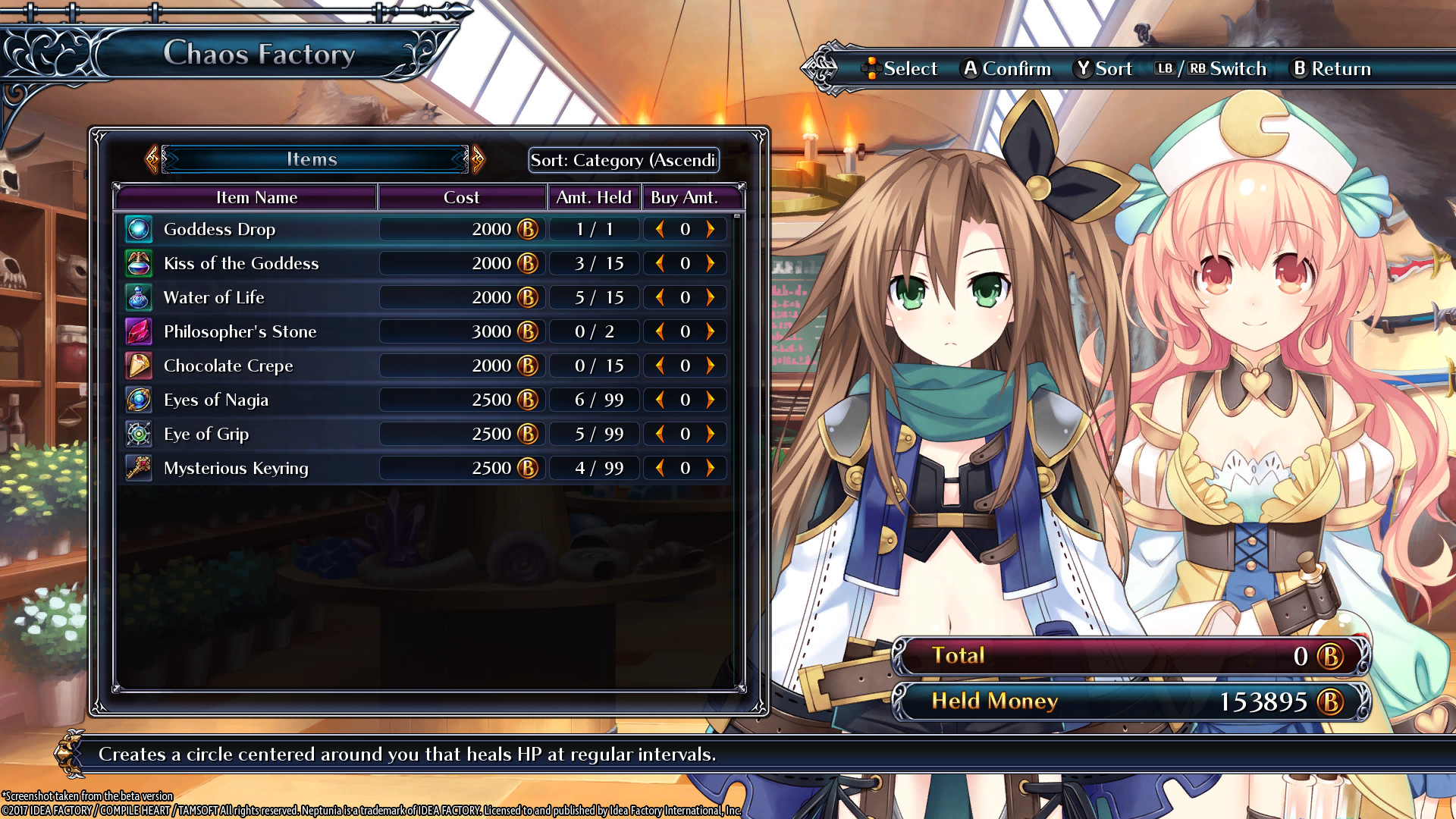
The dungeons reward you for exploring them. While you can generally see the path you need to take to get to the end of the area, exploration will lead you to chests. Sometimes those chests will contain new costumes or gear for you to use right away, other times they just contain items you can use as needed. You don’t really need to fight the enemies every time you pass through a dungeon other than to gain experience and acquire item drops. You can simply run past them as the battles occur on the map rather than in a special battle screen as one done in some of the previous entries. The maps are fairly well detailed and are enjoyable to explore. You can generally tell what surfaces you are meant to jump up and what is just there for decoration. The in-game map shows a 2D layout of the land but doesn’t necessarily show you the route you need to take particularly in dungeons that have multiple levels. While the enemies you are fighting in each of the dungeons don’t show much variation in appearance other than sometimes in their colour, they do get stronger in the dungeons you unlock later in the game. Recycling and recolouring enemies is common in MMO games and this is a game about an MMO so one could say that is the reason for it. It’s also the first game on the new Unreal Engine 4 platform so they also don’t have as many previous assets to pull from. Also being a new engine it means there is no Virtua Forest, which is typically found in each of the previous games.
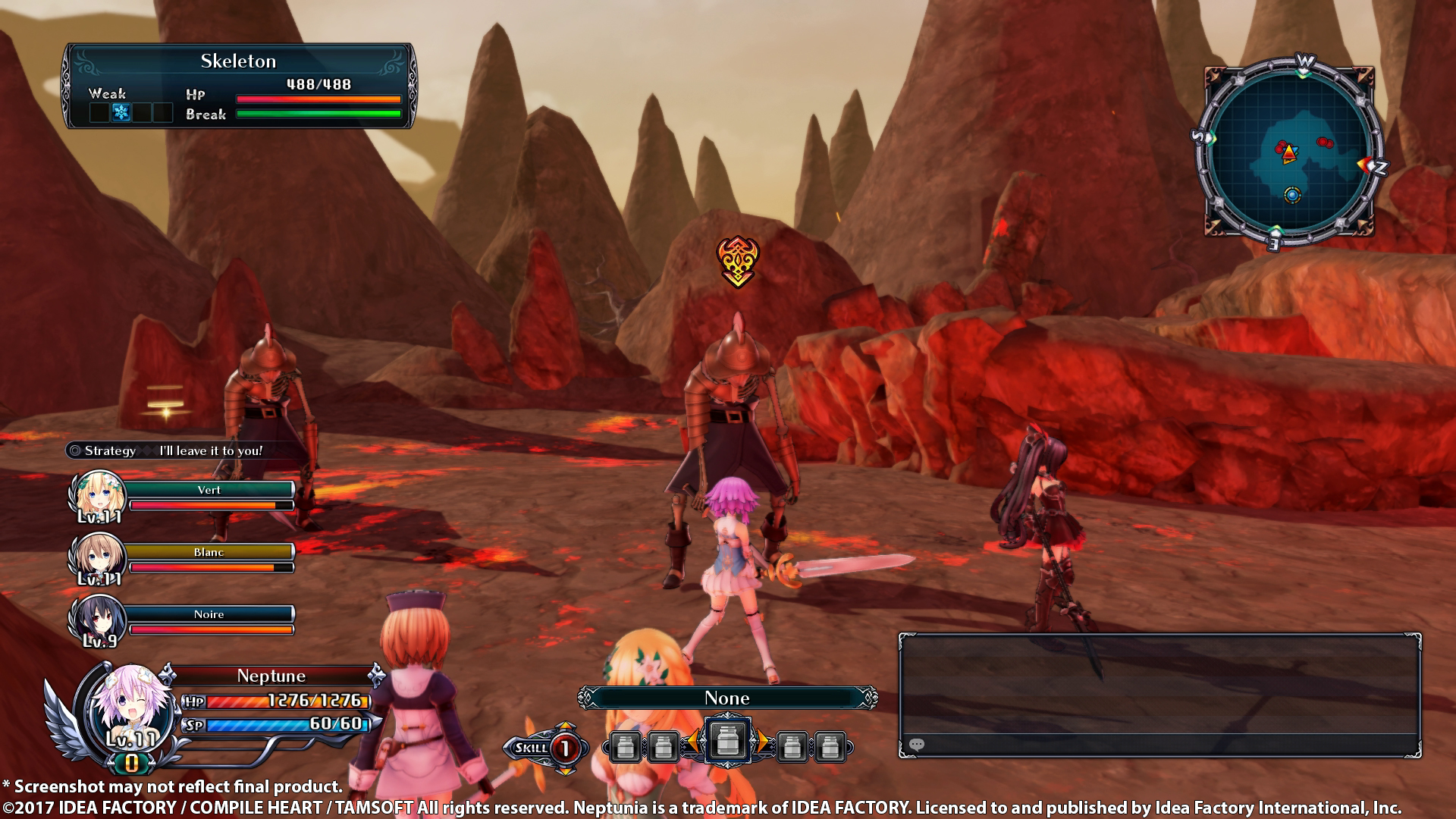
The battles themselves are of the hack and slash style. You can beat on the enemies with your weapons or you can cast magic. Magic attacks are better at breaking down shields and every enemy has a shield. Physical attacks deal more damage when their shield is broken. Thanks to the simple controls you are easily able to switch attack types on the fly. You can also charge up a stronger limit break like attack as you battle enemies. This limit break is as close to transformations as you will get in this game as the Goddesses in the game don’t share their “real world” counterparts ability to transform into their Goddess form. It makes total sense since they are playing a game using avatars that happen to look like them, but it still seems a bit odd playing a Neptunia game where no one can transform.
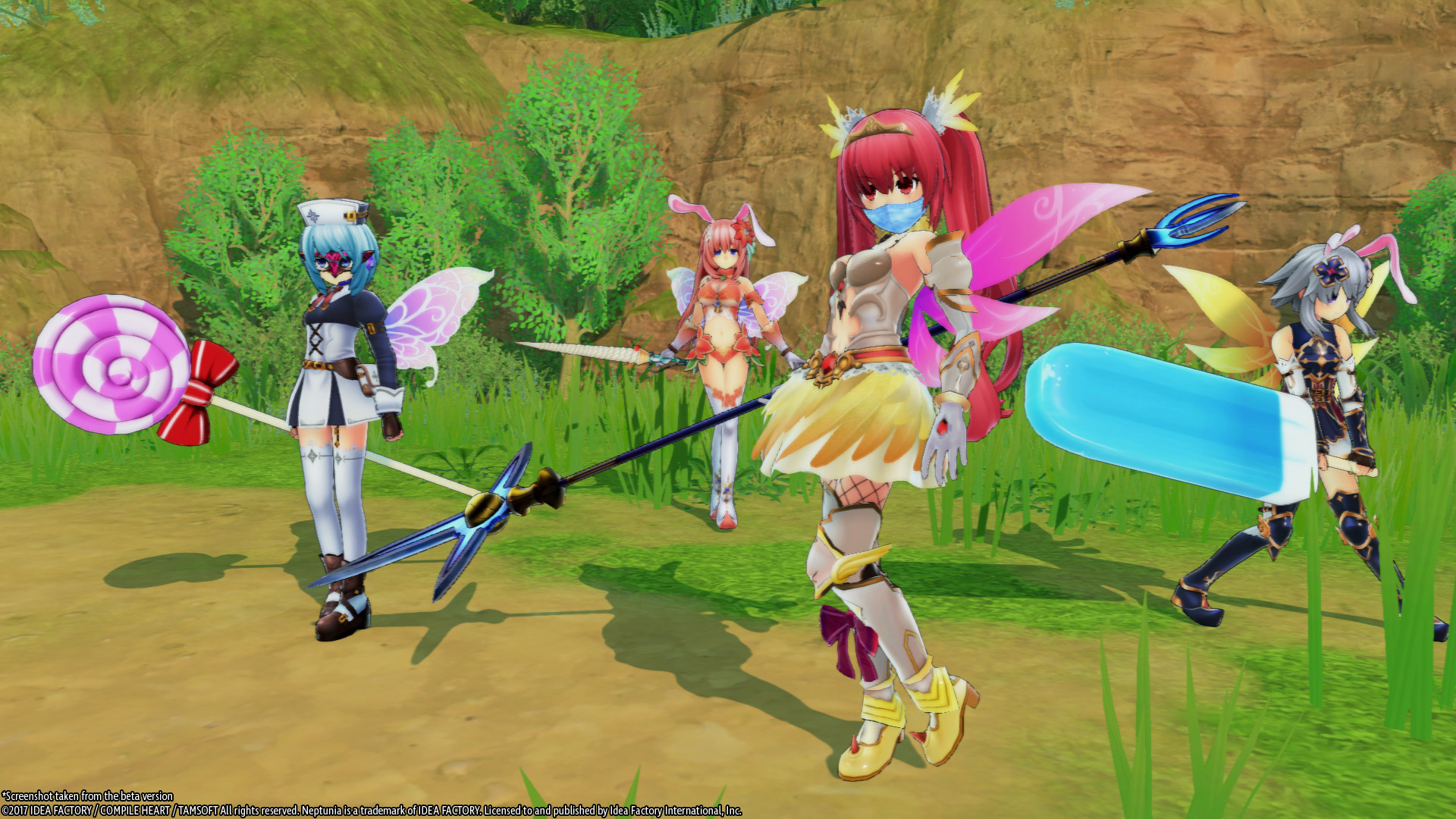
Digging a little deeper, let’s talk about how much in the way of customization options you have in this game. First off, you are not stuck with the starting four characters. If you for some reason want to commit high treason by not allowing Neptune to be the protagonist of the game (you will definitely hear from her lawyers) you can choose from any of the other playable characters (12 in total) to make up your party. Swapping them out as you go is a good idea as it not only allows for you to hear other random comments from the characters as you go, but it also helps round out your team’s experience points as the points are not shared to characters not in your party. Going beyond just the characters you use, you can also customize their appearance by equipping costumes and accessories. Some of them are familiar from the older games, others are brand new variations for this game. The customization doesn’t stop here though! You can also customize which spells your characters will have access to by assigning up to eight of them to your spell hotkeys. Lastly, you can also tailor your stats by equipping gems to each of your characters. These gems add various adjustments to your characters base abilities. Some add elemental effects, others boost stats/experience/money gains. Luckily with all these customization options available to you, you can swap them out on the fly, even in the heat of combat with a boss if you so choose, so you never have to be worried about being equipped wrong when you enter a dungeon.
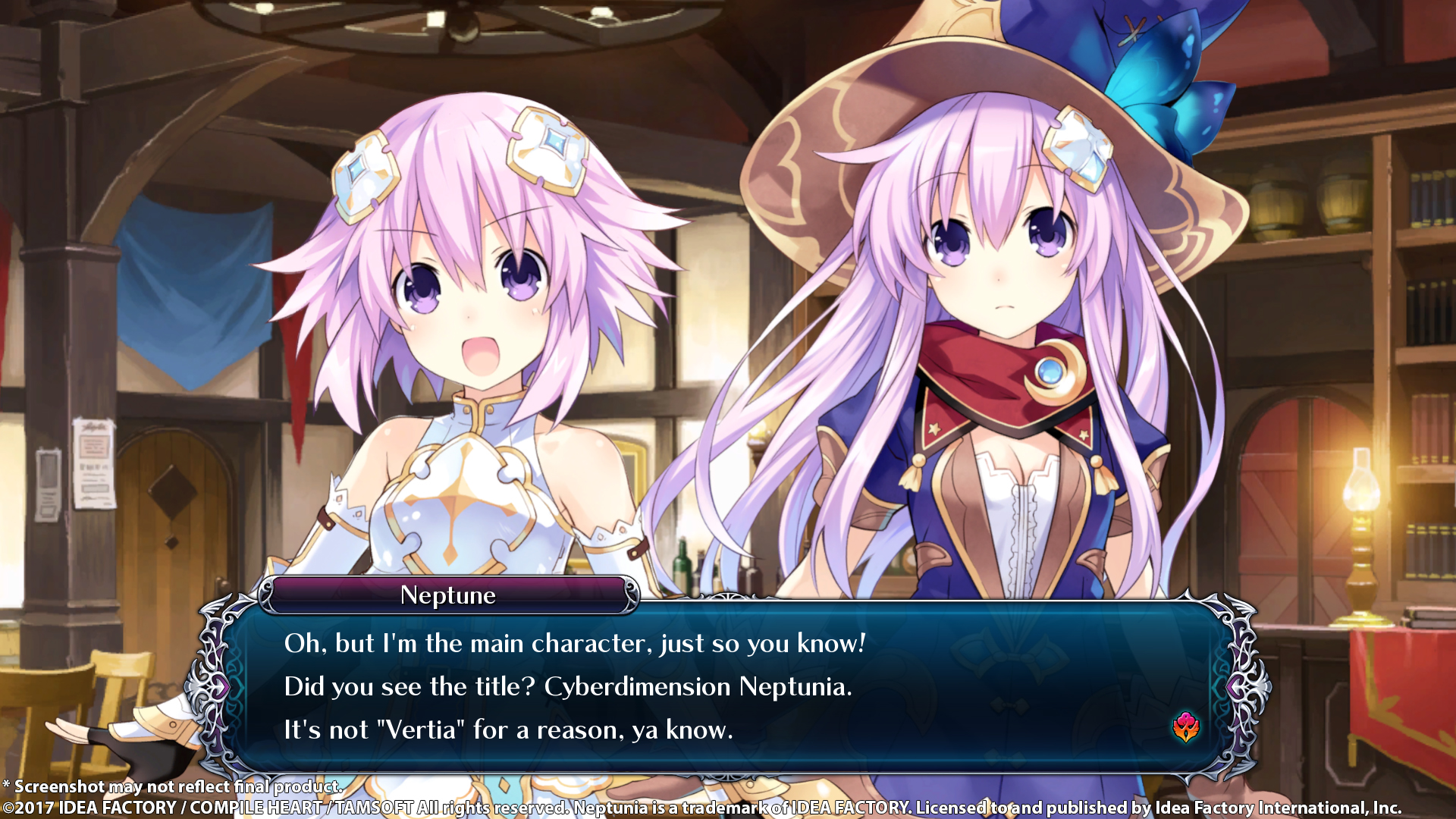
The story of the game is broken into three parts: the main plot of the game, the subplot and the Goddesses discussion of the game and gaming in general. The discussion aspect of that is common in all Neptunia games and would have been a bit disappointing had it been left out. The main plot of the game is your cliché story where the forces of good defeated evil in the past but left themselves weakened. While the forces of good recuperated so did the forces of evil and now the evil is poised to return and it is up to you to stop it! On the surface, you might think that is just a cheap excuse for a story, but when you actually take a moment to think about it, that is the point. It’s a satire, of sorts, of MMO games in general. Most of them have that basic plot either as the mainstay of the story or at least as a major arc in the story. The subplot isn’t exactly what I was expecting it to be. I assumed when I read it was about a game in beta, that Neptune and her friends would be encountering game breaking bugs, glitches, crashes and other issues. I won’t spoil the details of the subplot, but I will let you know that it takes over most of the second half of the game.

If you are a bit disappointed by the fact that this isn’t a true MMORPG and just a hack and slash JRPG masquerading as one, you will be happy to know the game does feature multiplayer. Even near launch, I was able to get into a game fairly easily. There were not that many rooms open, but the wait time to get into a game was minimal. Now here is the thing, I’m not entirely sure if this next bit is on me, or simply because of the way matchmaking works. The lag in multiplayer for me (when not hosting) was phenomenal. It was incredibly difficult to control with the massive input lag and the seemingly random movement that the game was interpreting as being what I wanted to happen. I tried a number of games as they are an excellent source of XP and helped me level up quickly to push through the game in order to have a timely review done. While in multiplayer, the built-in dialogue allowed you to say things in your character’s own voice to make it seem like you are voice chatting with your party mates. I thought that was a nice touch and it also helped prevent toxic dialogue between players. The multiplayer battle areas are on maps similar to those you encounter in the main game but can have different enemies or multiple enemies in the boss area. Overall, I can see the multiplayer being a fun way to level with friends so long as there isn’t a lot of distance between the players.
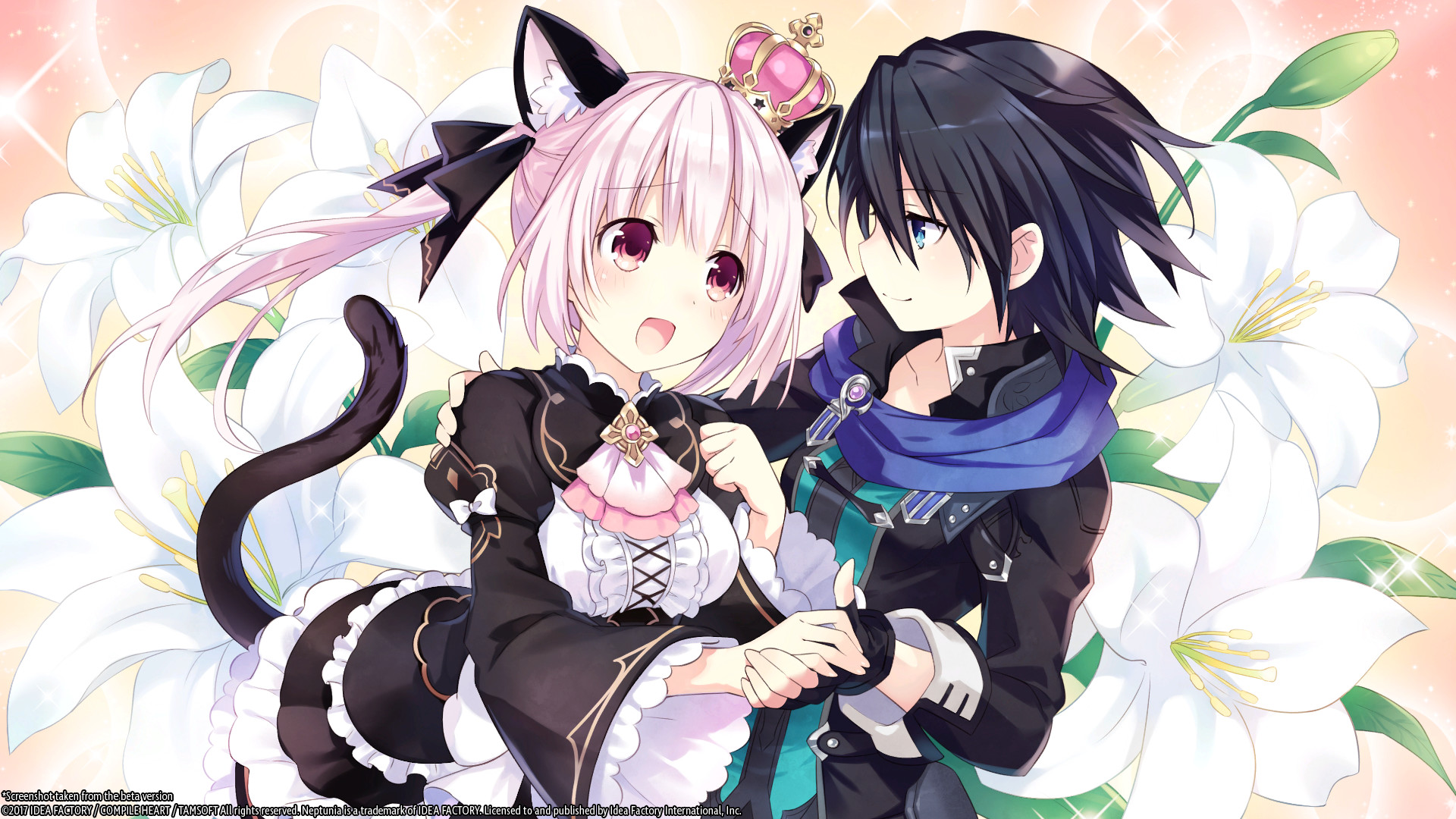
The controls of this game work well with the XBox 360 gamepad. It’s one of the few times I never had any issues remembering what button did what. The controls were very responsive outside of multiplayer. In some areas such as when you needed to walk over a narrow bridge, the precision of the controls allowed you to easily transverse the area. When having massive input lag of multiplayer these same narrow bridges were a nightmare where either you hoped for the best and possibly fell to the bottom to climb back up again, or walked so slowly over the bridge anyone watching you probably thought you were intoxicated.
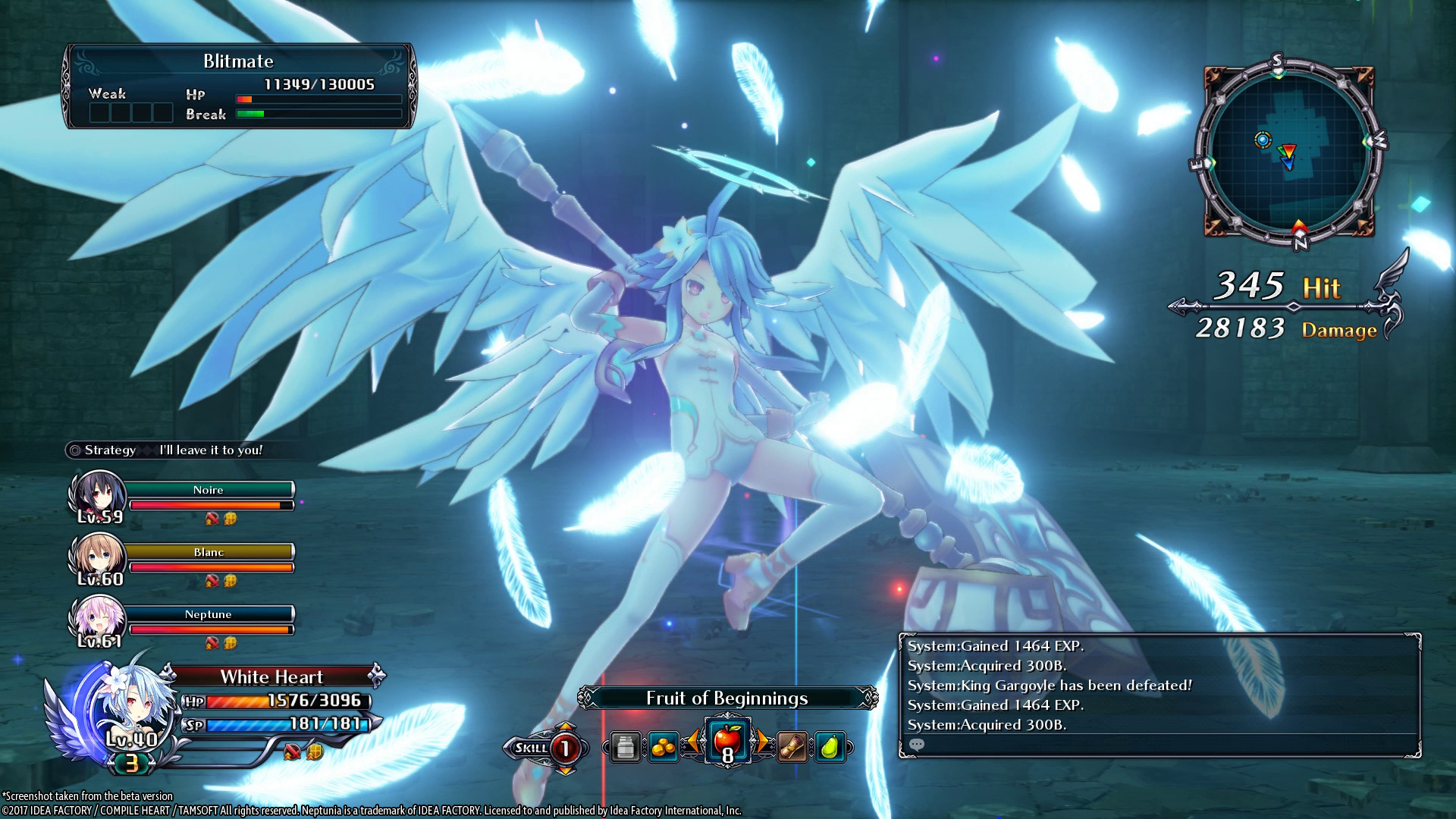
Graphically this game looks similar to the previous Neptunia games however it is now rendered in the Unreal 4 engine. This allows a little more detail and depth over the prior engine and gives the series the graphics overhaul some fans felt it was in need of. The character models both in the field and on screen are highly detailed. Even when cutscenes occur, the outfits and weapons you are equipped with are typically shown in the video sequence which I thought was a very nice touch. The maps were detailed sufficiently to make them enjoyable to walk through and the enemies encountered within were equally highly detailed. One thing that is a bit disappointing is that the characters in this game seemed a lot more lifeless. In previous games the characters would breathe and have their mouth move while talking, in this one they just stand around statically on the screen, occasionally changing to a new expression to suit the dialogue. This could be a limitation of the Unreal 4 engine at fault though, or perhaps it was because it was only avatars and not the “real life” versions of the characters.
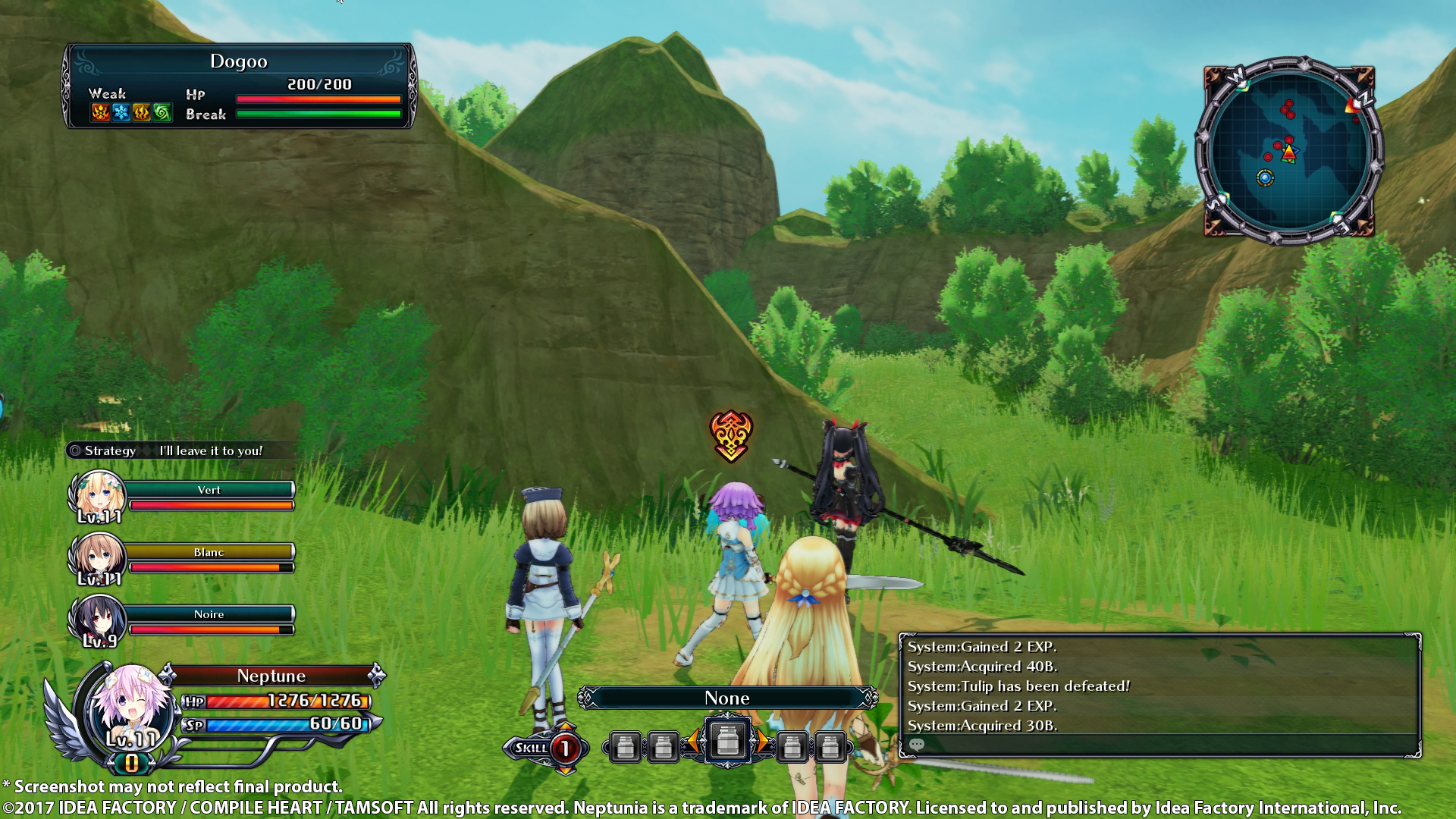
The sound in this game has an interesting quirk. Due to how demanding the system requirements are, I was unable to test this on another machine. I found that the default music level was set way too high and the character default voice level was too low in comparison. I could barely hear the characters talk until I turned the music volume down to about 20% or so. Skipping over that, some dialogue while moving and fighting through a dungeon is repeated so often it gets a little tiresome, but all in all, I’d rather it be there than not be there. The music in the game is on par with previous titles and fits the game well. The opening song is again a treat to listen to even if I have no clue what the words are. I really need to learn some Japanese to truly appreciate it in all its musical splendour.
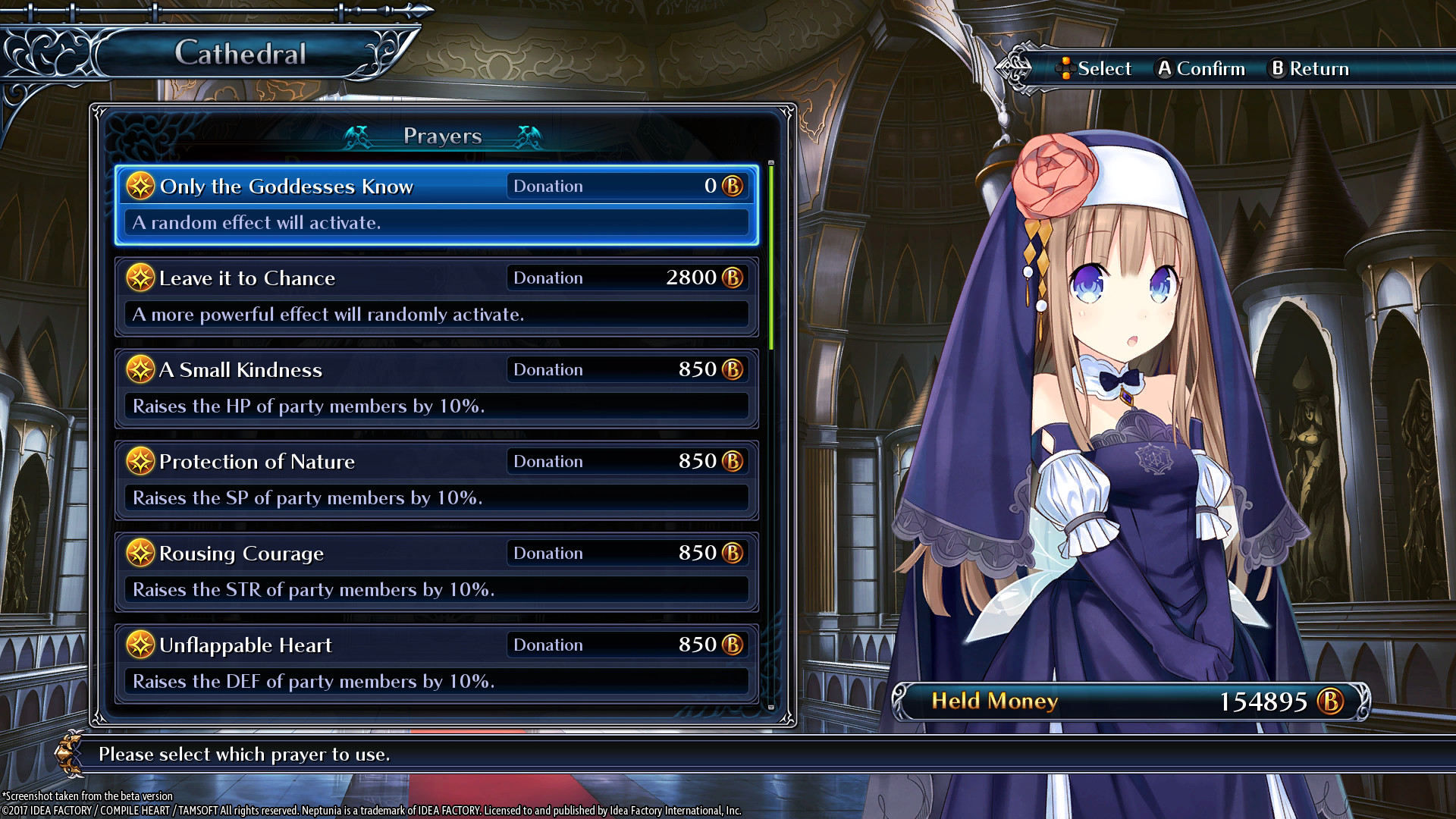
There are a couple of things I need to mention at this point. The game needs to load assets for you to be able to play the game. This means when you first launch the game you need to wait for it to load. This actually takes quite a while and then you have to sit through all the Developer logos each time. Honestly, the load time is so long that at first I assumed my computer was having issues. There is a good reason for this though as by doing all the preloading, you pretty much have no loading while playing. Any transitions between screens are very brief. I have to say that while it is annoying when you first start the game, not having to load while playing is definitely worth the wait. The other thing I need to comment on is the AI. While you can tell the AI what to do, sometimes the AI does its own quirky things. If you stop moving for a moment to check your map or change items/gear, some of the AI controlled characters will start running in circles. Also, sometimes the AI gets confused on what it should be doing and just stands there during combat rather than fighting. “Hmm, what am I supposed to do now… not sure, oww something hit me, oh right I am in the middle of a boss battle! En garde!” Speaking of boss fights, they are more of an endurance test than a challenge. Since they have no elemental weakness it basically means you will be doing a ton of low damage attacks against them until you whittle down their health bar. Some of them have powerful moves that if you are not careful will kill you or the AI party members, but really, they are more of just an obstacle to overcome than a true boss. It’s also possible that my party composition, spell/ability and gem loadouts might not have been exactly suited for dealing a ton of high damage attacks. I did try building a few Glass Cannons (High damage/low defence) characters, which made the boss fights more enjoyable and far more challenging but those builds felt more like a cheat gimmick than a proper solution for the long drawn out boss fights.
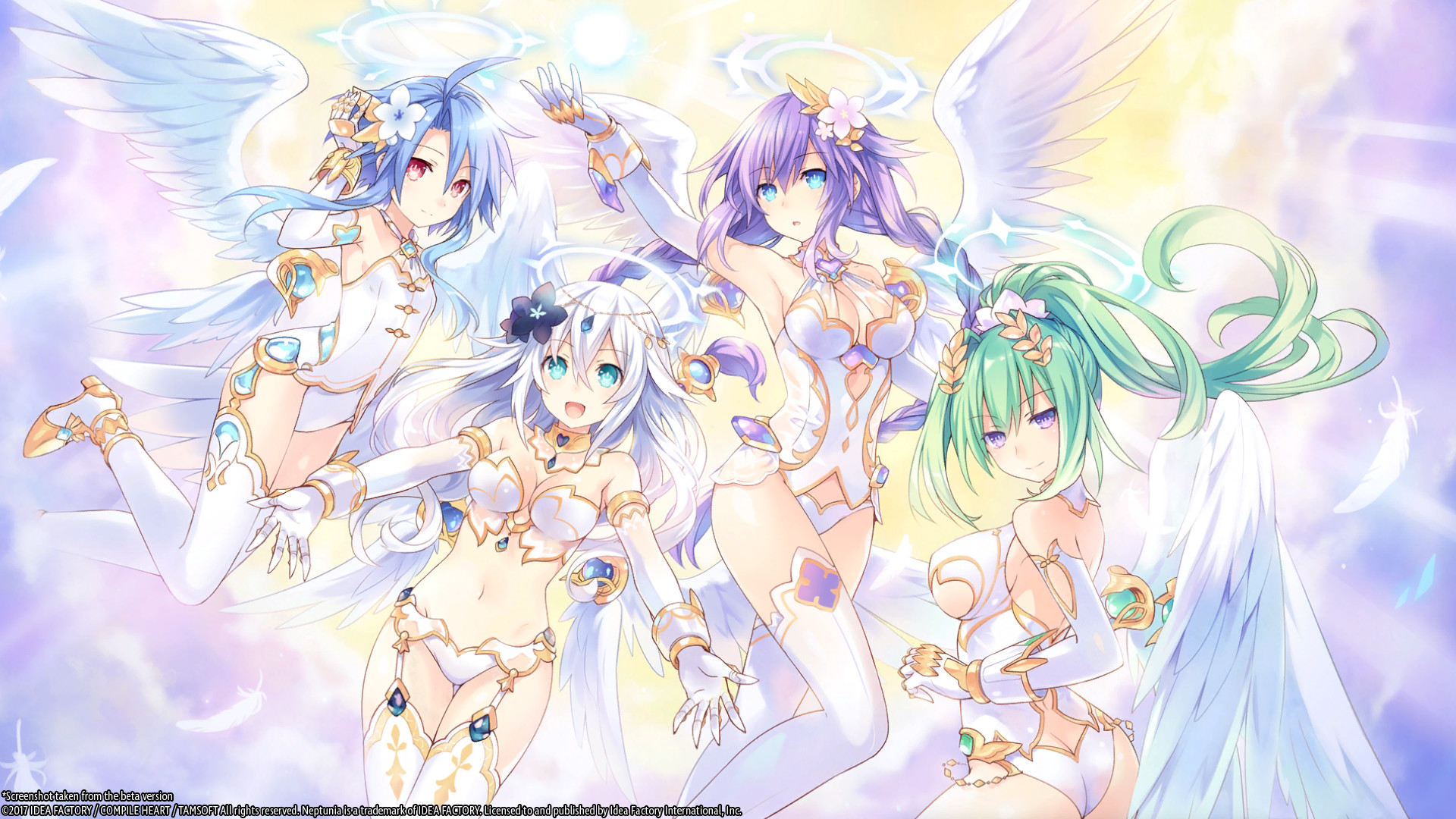
Verdict
So, should you get Cyberdimension Neptunia: 4 Goddesses Online? If you are a fan of the series, it goes without saying you likely won’t be disappointed. While it isn’t a main series game and is considerably shorter than Megadimension, it is still a worthwhile entry into the Neptunia series. If you are brand new to the series, I likely wouldn’t say go for this one as your first taste. Despite being a sequel itself, Megadimension Neptunia VII Is still a great starting point for the series. I have to say that Demon King Jester was a boss I would like to see more of. His character had that certain level of cartoon villainy that made me instantly enjoy him even though he was in the game so briefly and relegated to the sidelines. Bouquet, who served the role as advisor in the place of the absent Histoire, was also an enjoyable character I would like to see find a home in the main series. Perhaps it may be that somehow at the start of the next main series game due to the tampering that occurred in ‘4 Goddesses Online’, some of the code escaped the server and manifested itself in the “real world” allowing Demon King Jester and Bouquet to come to life. All in all, Cyberdimension Neptunia: 4 Goddesses Online is an enjoyable spin-off of the main series and I will certainly look forward to the next chapter of the main series!










